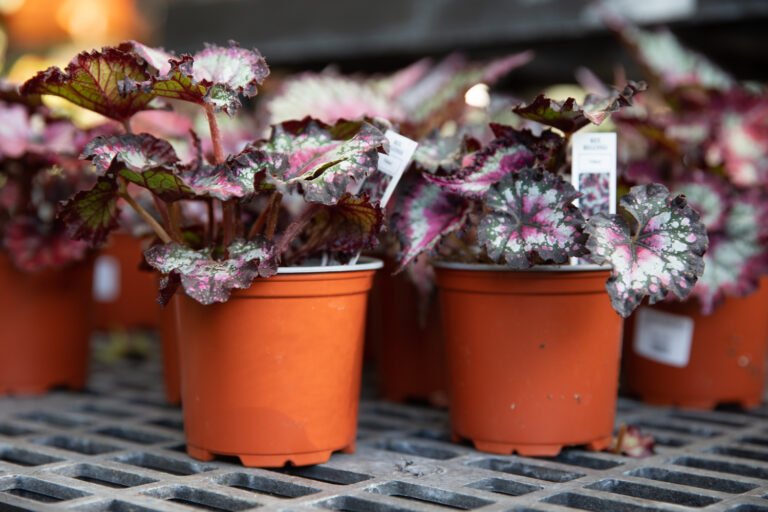Houseplants are Hungry

Bring on the Spring!
Plants Wake Up Hungry…
Now that the sunlight is stronger and stays around longer, your houseplants will break dormancy and start to stretch.
Some new growth brings flower buds with it immediately for early color. Others, like Rex Begonia indoors or Epimedium outside, send up leaves of a more vivid color, perhaps laced with pinkish-red before settling into the darker green of maturity. Once you see new growth, these plants will be tapping into nutrient reserves and need an infusion of balanced fertilizer now.
But how much fertilizer?
Plants growing in full sunlight need more fertilizer. They undergo more photosynthesis and require more nutrients. Plants in shade or low light require less fertilizer but more often.
Mix a balanced (ie 10-10-10) water soluble fertilizer at a ratio of ¼ teaspoon to 1 gallon of water. An organic fertilizer might have a lower numbered ratio like 7-9-5. With the organic fertilizer, you can increase the ratio to ½ teaspoon to 1 gallon of water. Water regularly as needed with this fertilized solution for a week to 10 days. Brighter situations will probably require more watering. After this time, switch to clear water for 2 waterings. Your plants in low light situations can be watered as often but reduce the ratio of fertilizer to water by half.
You’ll notice robust new growth within a couple weeks. Continue this rotation through the growing season as long as light levels are high and temperatures remain above 60 degrees F.
Not enough time to mix your solutions?
A top-dressing of granular or slow release fertilizer scratched into the soil surface around the plants will release nutrients over time, from several weeks to 3 months depending on brand or composition. Just check the fertilizer label for proper amounts. But, it’s still a good idea to water in a more immediate-action fertilizer for the first spring feeding.
Is it also time to repot?
You’ll see growth above soil, but don’t forget about the growth below! Houseplant roots also start actively growing and you might want to consider repotting. If the plant requires excessive watering, growth above has overwhelmed the container, or growth is pale and thin even with the regular feeding; your plant may be pot-bound and need repotting.
When changing pot size, increase your pot by only one inch in diameter. Too much space will waste water and cause too much moisture around the roots. As long as you have the plant out of the pot, check over the roots for damage or discoloration. Roots should be white with small root hairs along the larger lengths. The root ball should be full of roots with no mushy or moldy pieces. Trim out any bad or unhealthy sections and rinse with clear, cool water before repotting in fresh soil.
Even in containers indoors, your plants change with the seasons and wake up to spring. Be sure to give them a healthy start with a good breakfast and a suitable environment.
Spring Gardening Tips
The garden is waking up, and you're in charge! It's time to start planting, pruning, and preparing your flower beds.
Spring Articles